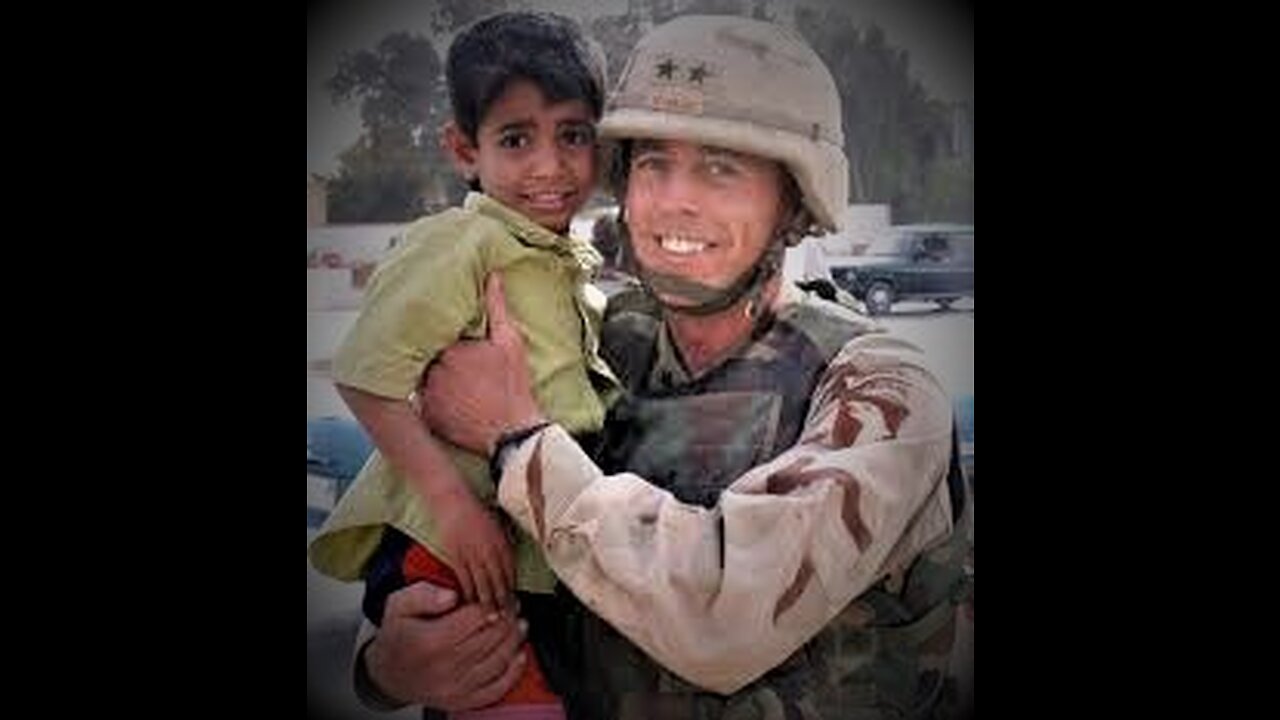Premium Only Content

DAVID PETRAEUS SURVELIANCE 'CARBYNE' SCANDAL
Jeff Bezos, Ashton Kutcher and Gen. Petraeus' crime predicting tech Mark43
Next-Generation 911: What You Need to Know
An explanation of what next-generation 911 is, implementation challenges and how soon it will become a reality
On May 1, 2010, a terrorist attack in New York City’s Times Square was thwarted when street vendors noticed smoke coming from a vehicle in which a homemade bomb had failed to explode. Imagine if those street vendors could have used their cellphones to send pictures or video of the vehicle and its license plate to a 911 call center. What if the 911 center could then push that data to first responders and police to get the location from GIS and buildings visual in the photos?
“They could really capture the dynamics of the event,” said Brian Fontes, executive director of the National Emergency Number Association (NENA). “That is what I call an information-rich 911 call, which will be supported in a next-generation 911 system.”
What Is Next-Generation 911?
Fifty-eight percent of Americans own smartphones and people now routinely send text messages, photos and videos from their mobile devices. And although 75 percent of all calls to 911 are wireless, most 911 centers today are still tethered to the voice-centered world of communications of the last century and are unable to receive text or photos.
The existing 911 system faces difficulties in supporting text or multimedia messaging, according to NENA, and it lacks the capability to interconnect with other systems and databases such as building plans and electronic medical records.
The very structure of the current 911 system is rapidly going out of date. “It is analog network-based,” said Roger Hixson, technical issues director for NENA. “You can’t find people in the phone companies knowledgeable about the old technology anymore. We have to evolve to survive.”
There is a movement under way to move to a next-generation 911 (NG911) system based on modern Internet protocol-based networks that take advantage of capabilities such as text and video messaging. And NENA has done years of work on developing the i3 architecture standard that vendors will follow.
“The intention is to have interconnected networks,” Hixson said. “That type of interoperability requires standards. People in public safety also indicated that they wanted more flexible systems not just in terms of multimedia versus voice, but also in terms of their ability to pick different vendors and have them operate together, so they weren’t locked in with just one vendor.”
The deaf and hard-of-hearing will especially benefit from an upgrade, because it will be easier for them to reach 911 with their phones without requiring additional devices. Looking not too far into the future, it could also harness the technology of biomedical devices, such as a defibrillator that could automatically call 911 during a medical emergency. Increasingly popular automatic collision notification systems, like OnStar, could be routed to 911 and change the way a dispatcher responds to a serious accident.
Beyond receiving and sending multimedia, there are other benefits to the new types of networks. Public safety answering points (PSAPs) will be able to transfer calls and activate alternative routing to share the burden during an emergency or when PSAPs are closed by disaster. For instance, during Hurricane Katrina, 38 call centers were disabled and people in those areas were unable to reach 911. In contrast, Vermont has implemented a modern IP-based network linking its eight PSAPs. When Hurricane Irene took one of them offline in 2011, the other seven were able to seamlessly answer calls for that area. The next-generation system promises to allow seamless information sharing between 911 centers, first responders, trauma centers and other emergency response entities.
Linked PSAPs will also be able to share resources like GIS databases rather than each having to purchase its own.
“From my perspective, it will allow our 911 centers to function in the 21st-century world of telecommunications,” Fontes said. “It will allow for information — voice plus video and data — to move seamlessly from consumer to the 911 center, and then ultimately to first responders participating in FirstNet, the wireless public safety broadband network.”
What Will it Take to Implement?
If the benefits of NG911 seem obvious, the transition itself is by no means easy. There are many issues that states and regions must work through relating to technology standards, the process of transition, governance and funding. Creating regional or state networks of previously autonomous 911 authorities raises many issues. Complicating matters is that each state handles 911 differently.
Progress is uneven across the country. Some regions, like King County, Wash., have been working on upgrading their emergency call centers with NG911 technology for almost a decade. Yet in many rural parts of the country, very little has been done.
There are more than 6,000 PSAPs in the U.S. and they all do things slightly differently, said John Chiaramonte, senior program manager with consulting firm Mission Critical Partners. “Whether these changes happen at a city, county, regional or state level depends on factors having to do with size, history and culture,” he said.
For instance, Vermont has made progress on NG911 because it has only eight PSAPs statewide. Rhode Island has just one PSAP for the whole state. It is much easier to control funding and governance in those situations compared to someplace like Texas that has hundreds of PSAPs.
“Technology is not really the big issue,” Chiaramonte said. “It is more the funding, policies and governance that must be worked through.”
The 911 authorities also have to determine how they will maintain legacy systems while working on new ones. “There is not going to be a flash cut-over,” he said. “For a while there is going to have to be a hybrid approach.”
Regions around the country are developing Emergency Services IP networks (ESInets), which are the foundation on which 911 will be built. They are designed to expand mutual aid and allow for the sharing of applications and systems. For instance, they could provide internetwork access to databases such as hazmat information.
In one example, 17 emergency telephone system boards in southern Illinois have bound together through intergovernmental agreements to create a secure public safety broadband network. They will share voice and data associated with a next-generation capable 911 system. Instead of purchasing 17 separate sets of NG911 equipment that would each serve a limited geographic area, they are purchasing two redundant systems and connecting them through a secure IP network.
Some states, like Ohio, are planning a common statewide network structure for core functions. “That highlights an incredibly important point,” Fontes said. “Everyone wants to know what the cost is going to be, and that is a valid question to ask. But there are cost savings associated with the investment. In Washington, where they have deployed the telecom infrastructure for NG911, they have a 48 percent savings in telecommunications cost. So looking at cost is just one side of the coin.”
Colorado is a case study of the promise and challenge of NG911. Daryl Branson, executive director of the nonprofit Colorado 9-1-1 Resource Center, explained that 911 is very much a locally controlled service in his state. Many states have some level of state coordination, such as a 911 office or board. But not in Colorado where the only oversight of 911 service at the state level is the Public Utilities Commission (PUC). And the PUC is tasked only with overseeing the quality of service provided by the carriers, Branson said. “That presents some challenges for local-control states,” he added, “when they want to try to transition to a type of network that is regional or statewide in nature, which is what NG911 would be.”
Stakeholders in Colorado are trying to define a new path because there’s no desire to give up local control or create a new regulatory or oversight body at the state level, Branson said. There have been investments in preparation for NG911 in many parts of Colorado.
“In the Front Range corridor from Fort Collins to Colorado Springs, there’s an understanding that this is the direction we have to go, and a lot of authorities have put in structures already to get themselves ready for an IP-based future,” Branson said. “But in rural areas of the state, in some cases they see the potential, but in other cases it seems very far away and I don’t think it is very high on their list of priorities.”
Speaking at a Feb. 25 PUC workshop, Matt Goetsch, 911 coordinator for the Montrose County 911 Authority, expressed concerns about going to the added expense for features that a smaller authority and PSAP may not need for some time.
Joseph Benkert, counsel for the Boulder Regional Emergency Telephone Service Authority, which has four PSAPs, said Boulder uses an IP telephone system provided by Intrado. “We could implement NG911 pretty easily at any time.” But he said there are several unanswered questions, including: When does it make sense to do so on a cost basis? And when are the features and services going to be available?
“Our concern is somewhat with the expense of those services and features that may only benefit a small number of people,” Benkert said. “And where would we take money from to pay for those services or features? Because it is a zero-sum game among the public safety agencies.”
System upgrades funded and coordinated by the Larimer Emergency Telephone Authority (LETA) have connected the five PSAPs in Larimer County with a next-generation-ready network. LETA plans to begin offering text-to-911 services in June, working with all four main mobile carriers in Colorado, said Kimberly Culp, the organization’s executive director. The five PSAPS can now communicate instantly online and reroute 911 calls to other communications centers during times of heavy call loads.
Culp agreed that funding can be a challenge, but she said that LETA had been planning for the changes for years, including setting aside funds for the upgrade. “You have to do it in steps,” she said. “You can’t do it all in one year. The biggest challenge for Colorado is how do we do it together? Here in Larimer County, we are good to go.”
The big question, Culp said, is how to connect to adjacent counties or to help them upgrade. “We don’t need state oversight. We just need to go ahead and do it on the local level.”
How Soon Will NG911 Become Reality?
Fontes and Hixson both estimate that NG911 should be fairly ubiquitous in the U.S. within five years, although there will be outliers that take longer. So what’s the main roadblock?
In some states, 911 is woefully underfunded, and the 911 community has expressed concern that the federal government has not made enough grant funding available for the transition. The federal government has spent just $43 million on grants going back to 2008 for NG911 projects, and so far has designated $115 million (in the Middle Class Tax Relief and Job Creation Act) for it going forward.
“If we really are going to ensure that our nation has a NG911 system, we have to make sure we are on par with other public safety services, and that we have a sufficient amount of money to enable this to occur,” Fontes said. “There are 250 million 911 calls made each year, and that is the first link to public safety. And to have that first link so critical to the whole chain of events underfunded is very unfortunate.”
No one at the local level wants to see the federal government do anything that looks like it’s taking over local provision of 911 service, Branson said, but he noted that the federal government is spending up to $8 billion on the FirstNet network to connect first responder agencies with wireless broadband.
“Clearly, their priority is on FirstNet and not on NG911, but the way I look at it, those are really two sides of the same service. Getting information from the public to the PSAP is the NG911 part,” Branson explained. “They are spending money on the back end, which is getting information from the PSAP to the first responders. But if you can’t get that information from the public to the PSAP first, you’re missing half the equation.”
There are great opportunities for collaboration between NG911 and FirstNet, Chiaramonte said. FirstNet is being designed as a wireless broadband network to connect all first responders. NG911 is a new network to connect all 911 systems. “These are parallel activities going on, and there needs to be more coordination and bridging between these two efforts,” he said. “There are finite resources and not enough funding for either so far, so it is imperative that the efforts be coordinated.”
Aside from funding, another hurdle is that legislative changes are needed in most states because the rules governing 911 haven’t been rewritten in 40 years, Chiaramonte said. “They often specifically reference legacy technology and might not be open to interpretation with newer technology.”
A 2011 report by the California Technology Agency noted that several state laws and regulations governing the type of devices and “calls” allowed to access the NG911 network might require modifications, including:
reviewing laws and regulations concerning the eligible use of NG911 funds;
ensuring that laws or regulations do not require specific technology components for 911 service delivery that are incompatible with NG911 service;
eliminating laws and regulations that inhibit efficient sharing of NG911 data, but retain appropriate safeguards for privacy protection;
crafting uniform requirements for all NG911 service providers that meet accepted industry standards;
ensuring that laws and regulations are functional, standards-based and performance-based, without reference to any specific proprietary technology, manufacturer or service provider; and
ensuring that state and local government should be prohibited from reallocating funds intended for existing 911 and new NG911 services to other purposes.
When asked what other roadblocks remain, Fontes stressed leadership. “There seems to be an understanding that 911 is important, but no one does the deep dive into how 911 really works.”
Government leaders need to treat 911 on par with police, fire and emergency medical services as a critical public safety service. Increasingly, Fontes said, consolidated emergency communications centers are operating independently and no longer tethered to police, fire or EMS. But policymakers have to understand their importance. “Of course, we would always like money,” he said. “But more importantly, we would like equal treatment for grants and funding that already exists for public safety.”
Who gets: Mark43, a software maker that uses cloud-based records management and analysis tools for patrol officers. The technology enables detectives to review traffic diagrams, as well as collaborate, attach uploaded files, and control access to cases.
Amount raised: $27 million in Series B. Mark43’s $10.8 million Series A round was announced last August.
Who invests: Financing for the round was led by Spark Capital and General Catalyst with participation from existing seed and Series A investors including former director of the CIA General David Petraeus. New participants include Jeff Bezos, Ashton Kutcher’s Sound Ventures and Goldman Sachs. Existing investors Lowercase Capital, SV Angel and the Govtech Fund also returned.
What the CEO says : “From massive amounts of administrative work to ineffective information-sharing, workflow issues can seriously limit law enforcement and their ability to fight crime,” said Scott Crouch, co-founder and CEO of Mark43. “Mark43’s platform vastly improves the overall information collection and management while helping detectives immediately access information and conduct investigations. Whether in the field or at their department, Mark43 saves valuable time and energy for police departments so they can optimize how they allocate valuable resources.”
Company details: As police departments are adopting body cameras and using other instrumentation, Mark43 could be the local station’s latest addition. Based in the Flatiron District, the startup aims to assist police departments of all sizes in their reporting and analysis. The software platform, known as Cobalt, integrates records management with investigative tools within a seamlessly-integrated suite. Mark43, Gen. Petraeus said last year, “can accommodate the input of increasing types of data as the world of policing continues to evolve.” Indeed, police departments are increasingly adopting body cameras and using other instrumentation.
Back to Newsroom
The Real Scandal of David Petraeus Is Afghanistan
An emerging theme in the ever-widening media coverage of Gen. David Petraeus’s illicit affair with his biographer, Paula Broadwell, is that while the highly decorated Army commander and now former CIA director made a huge mistake in his personal life, he remains an American hero for his leadership in the wars in Iraq and Afghanistan.
At a Wednesday press conference, President Obama said he hoped the Petraeus scandal “ends up being a single side note” on what has otherwise been “an extraordinary career.”
But that is a bogus narrative, says retired Lt. Col. John L. Cook, a former Army intelligence officer and senior adviser to the Ministry of Interior in Afghanistan, who oversaw the development of the force structure of the Afghan National Police.
In his book Afghanistan: The Perfect Failure, released in September, Cook—who earned the Silver Star, three Bronze Stars, and a Purple Heart during his two-decade career as an intelligence officer—divulges secrets of America’s longest war and suggests that all the major objectives in Afghanistan have not worked, in large part because of Petraeus.
“Petraeus shouldn’t have resigned over the extramarital affair, he should have resigned over the way in which he handled Afghanistan,” says Cook, who served in Afghanistan from March 2008 to August of this year. “Petraeus made a mess of things in this war. That’s the real scandal.”
It’s not that Cook approves of Petraeus’s personal behavior. In fact, Cook says Petraeus is “probably not being truthful” about when his affair with Broadwell started. Cook says that Petraeus would often come over to the NATO training mission offices with his entourage when they were both in Kabul.
“I remember one time when he came over for a meeting, he had a young woman with him,” Cook says. “I asked who the woman was, and one of his staffers told me that she was writing a biography about him. When I asked them what she had done before, they told me that she wasn’t even a writer, she was a student. Petraeus will say he never started this relationship until he left Afghanistan, but I think the affair was going on in Afghanistan. His staffers were already concerned about their relationship.”
But, Cook says, “that isn’t the story that Americans should be paying as much attention to right now. What matters more was what Petraeus did as a commander, not what he did in the bedroom.”
Cook, whose office at the NATO training mission was directly across the street from Petraeus’s office at International Security Assistance Force (ISAF), says the general’s failures in Afghanistan actually started long before he was named commander there in 2010.“My major heartburn with Petraeus is his counterinsurgency strategy, which he wrote back in 2006 when he was assigned to U.S. Army Center for Combat Studies at Fort Leavenworth (Kansas),” says Cook. That so-called Counterinsurgency Field Manual, which was released in December 2006, was a wrongheaded strategy for this war, insists Cook. “But they are still using it in Afghanistan today,” he says. “It places a higher value on the lives of Afghan civilians than the lives of our own soldiers, many of whom have died unnecessarily because of this counterinsurgency debacle.” Cook, who ran the Phoenix Program, the highly controversial and some say greatly misunderstood counterinsurgency plan employed by U.S. forces during the Vietnam War, says that in a situation where the central government had the respect of its people, Petraeus’s counterinsurgency plan would have been worth a try. “But it was doomed to fail in Afghanistan,” says Cook, “where (President Hamid) Karzai is feared more by the civilians than the Taliban is. The country is corrupt on every level; the citizens despise and distrust the government. The country is just not a good candidate for counterinsurgency.” Cook says that when President Obama appointed Petraeus to command U.S. Forces in Afghanistan as a replacement for General Stanley McChrystal, who was fired for making critical comments about the White House in a Rolling Stone article,Petraeus should have adopted more traditional counterterror operations.
“That means kill the bad guys, knowing you will sometimes sadly take civilian casualties, or get the hell out,” says Cook. “I know we have to do whatever we can to avoid killing civilians, but not at the expense of our own troops. What did Petraeus do when he became the commander in Afghanistan? He doubled down on these failed tactics and instituted even more severe rules of engagement.”
Cook suggests Petraeus is smart enough to know that his counterinsurgency was a failure in Afghanistan, but “he has too big an ego to admit it; he had pride of ownership. Now, when they go into a combat zone, our forces can’t return fire unless they know that no civilians in the area could get wounded. And requests for air support are often denied if there is even a possibility of civilian casualties. The Taliban knows this, that’s why they attack our forces in populated areas.”
Until the news of his extramarital affair broke, Petraeus was probably best known for leading the U.S. military surge in Iraq. A widely heralded military man, Petraeus still has staunch supporters despite the current sex scandal and how it may or may not relate to the terror attack in Benghazi, Libya.
In addition to having Obama’s support, he also still has defenders in the media, from The Washington Post’s Richard Cohen who says there is “no better man to fill Petraeus’s vacant CIA seat than Petraeus himself,” to CNN’s national security analyst Peter Bergen, who said this week that “historians will likely judge David Petraeus to be the most effective American military commander since Eisenhower.”
Cook says some journalists are “obviously still drinking the Kool-Aid. The press has given Petraeus a free pass for the most part, and some of them still are.”
But not all of them. In a heated exchange this week on CNN’s Piers Morgan Tonight, former Newsweek journalist Michael Hastings, who now writes for Rolling Stone and Buzzfeed, said Petraeus “manipulated the White House into escalating Afghanistan,” and ran a campaign in Iraq that was “brutally savage” and that armed Shiite death squads and Sunni militiamen.
Says Cook, “Michael is absolutely right about that. Petraeus has been a failure on every level. I just personally know more about Afghanistan because I was there for four and a half years. I went there in part to see how it compared with my experiences in Vietnam. I had positive feelings about our success in the Phoenix Program, which was effective but came under fire and got a bad reputation. The U.S. Army ignored our findings and started over. What I found out while in Afghanistan is that the new strategy, which Petraeus is responsible for, is hopeless.”
Cook believes that over time, Petraeus began to believe the glowing press accounts of him as a great leader. “I think it really fed his ego,” Cook says. “You can’t be a diplomat, statesman and combat commander at the same time. When you twist the war into a vague, politically correct, disembodied policy and worry too much about what the politicians are saying, you lose your way. He lost his way.”
Cook holds Gen. John Allen in similarly low regard. Allen, the four-star Marine general who was Petraeus’s hand-picked successor in Afghanistan, is now also under investigation by the FBI and the Pentagon inspector general because of his alleged relationship with Jill Kelley, the Florida socialite who initiated the FBI probe by reporting threatening emails she had received from Broadwell.
A year ago, Allen fired a close friend of Cook’s, Maj. Gen. Peter Fuller, deputy commander for programs at the NATO training mission in Afghanistan, for public comments Fuller made about Karzai, after the Afghan president said that if the U.S. went to war with Pakistan, Karzai would support Pakistan.
“Why don’t you just poke me in the eye with a needle! You’ve got to be kidding me,” Fuller told Politico at the time. “I’m sorry, we just gave you $11.6 billion and now you’re telling me, ‘I don’t really care?’ ”
Those words cost Fuller his job. And Cook lost all respect for Allen after that.
“He threw Pete [Fuller] under the bus,” Cook says. “Allen is a lot like Petraeus. They’re both this new kind of general that doesn’t have the brass to stand up to the folks in Washington for what is right, unlike generals of the past. Allen, like Petraeus, has no integrity. Pete and John Allen were good friends, but Allen had no reservations about firing him just for saying what everyone was thinking.”
The day before Fuller went back to Washington D.C. on business in November 2011, Cook says, “He and I had breakfast at the dining hall at Camp Eggers [in Kabul]. He is a truly honorable man and what happened to him was completely unacceptable.”
Cook says he wrote the book about Afghanistan and is speaking out now about Petraeus, and Allen, because, “I love our troops. They represent the best America has to offer. To waste them in a lost cause is beyond words.”
https://www.theatlantic.com/international/archive/2012/11/the-real-david-petraeus-scandal/265127/
-
 1:10:59
1:10:59
FreshandFit
4 hours agoTop 3 Ways To Overcome A Break Up
43.4K5 -
 LIVE
LIVE
Akademiks
6 hours agoDrake Finally CUTS off FAKE FRIENDS in the Industry. VIOLATES KHALED, LEBRON! Announces album Feb14
2,692 watching -
 27:28
27:28
Glenn Greenwald
9 hours agoGlenn Reacts to Trump's Gaza Take Over: System Update Special
155K268 -
 2:13:49
2:13:49
Melonie Mac
5 hours agoGo Boom Live Ep 36!
79.4K9 -
 1:02:11
1:02:11
Sarah Westall
6 hours agoFreezing USAID & its Operations in Ukraine: A Massive Money Laundering Organization? w/ Sam Anthony
75.5K9 -
 2:05:35
2:05:35
Space Ice
9 hours agoSpace Ice & Redeye: Neil Breen's Pass Thru
28.3K1 -
 1:00:23
1:00:23
The StoneZONE with Roger Stone
5 hours agoRoger Stone Talks Trump’s Electric First 100 Day Agenda | The StoneZone w/ Roger Stone
33.7K8 -
 DVR
DVR
Redacted News
8 hours agoBREAKING! EPSTEIN LIST INCOMING UNDER AG PAM BONDI? DEMOCRATS FREAKING OUT, PRINCE ANDREW NERVOUS
180K251 -
 52:02
52:02
Candace Show Podcast
11 hours agoBecoming Brigitte: An Inaccessible Past | Ep 2
168K247 -
 2:07:26
2:07:26
2 MIKES LIVE
9 hours ago2 MIKES LIVE #176 News Breakdown Wednesday!
31.3K2